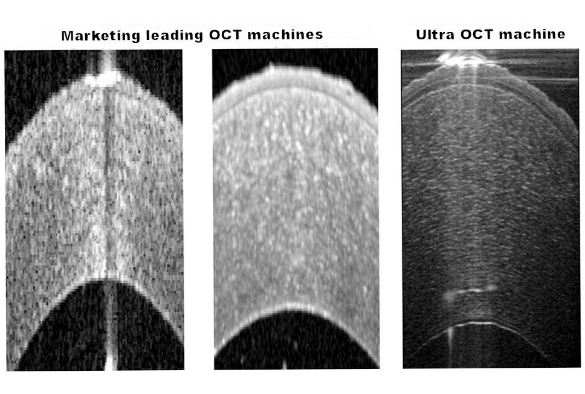
Eye and vision scientists at the University of Liverpool have been awarded £1.3 million to revolutionise the way corneal eye conditions are detected, diagnosed and managed.
The award from the National Institute for Health Research’s (NIHR) Invention for Innovation (i4i) programme is to develop a state-of-the-art Ultra-Sensitive Optical Coherence Tomography (Ultra-OCT) system.
The best commercially available OCT machines have a resolution of no more than 4 micrometres, but the Liverpool team’s system has a far superior resolution of 2 micrometres and can scan 1,000 times faster.
This means that doctors using the Ultra-OCT will be presented with a non-invasive, safe, cross-sectional view of a cornea – a virtual biopsy – while patients will benefit from earlier disease detection, more accurate monitoring of their eyes and personalised management of their conditions.
The award will fund the development of a clinical prototype, produced in collaboration with colleagues in the University’s Electrical Engineering & Electronics department. It will then be tested with patients at St Paul’s Eye Unit at the Royal Liverpool University Hospital, while The Centre for Health Economics & Medicines Evaluation (CHEME) at Bangor University will assess its cost effectiveness for possible future NHS use.
The NIHR has previously funded a lab-based prototype of the system, which with its fast, precise and accurate automated analysis tools performed exceptionally well when scanning donated human eye tissue. The multi-disciplinary team, led by Dr Yalin Zheng at the University’s Department of Eye & Vision Science, is confident that the clinical prototype will do the same.
Dr Zheng said: “OCTs have already transformed the way we diagnose and treat eye conditions, but our aim is to develop a system which will take that to the next level. By adopting a different approach to other systems on the market we are developing an OCT scanner which offers superior scanning technology and wide applicability, while also being commercially viable.”
